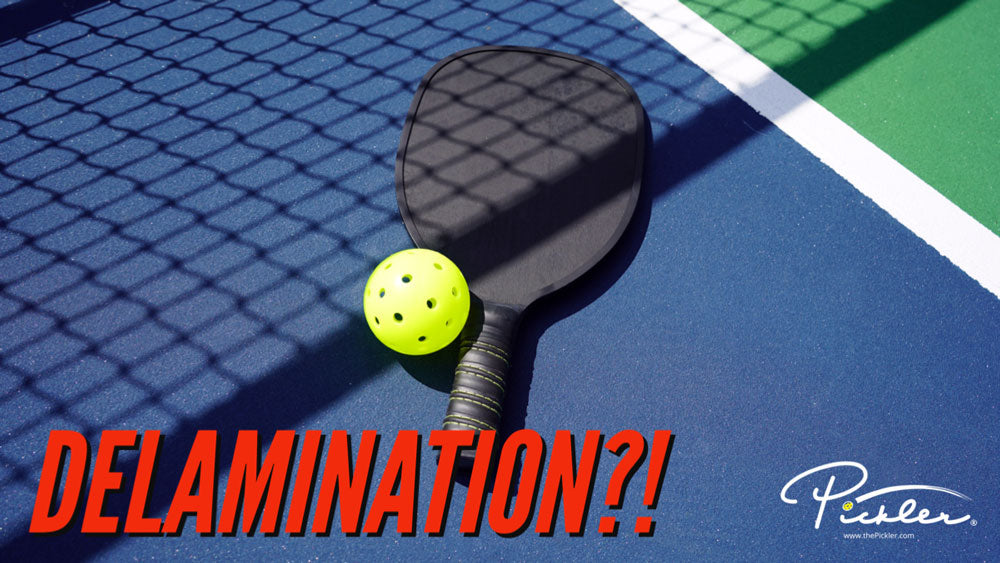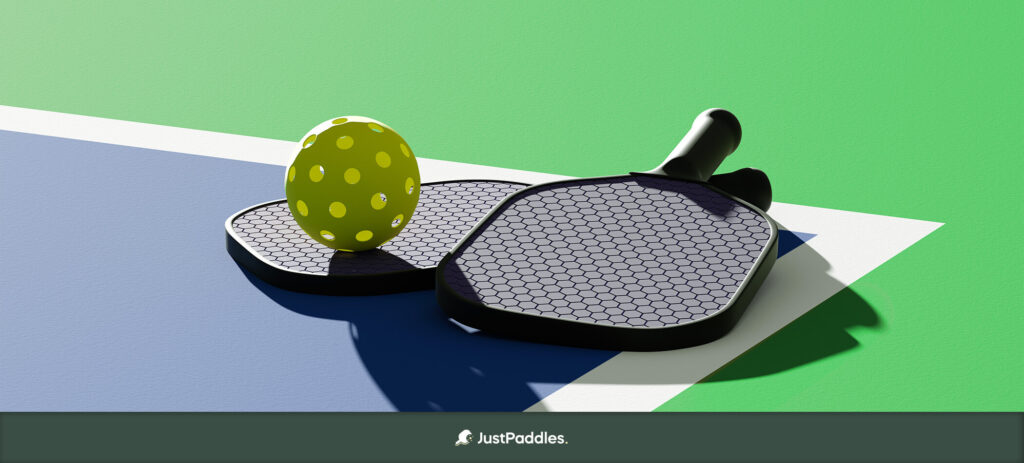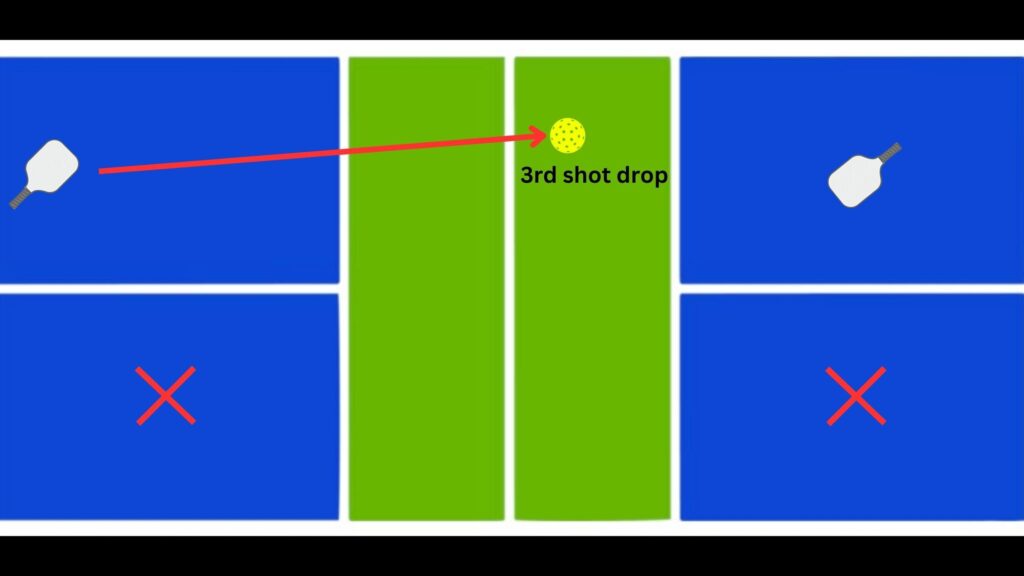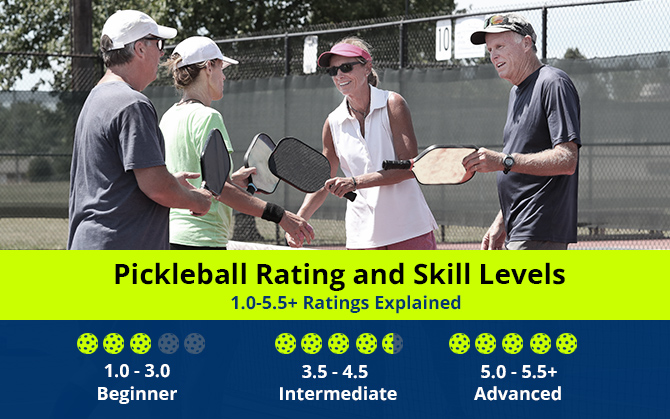To check for delamination on a pickleball paddle, look for any bulging, separation, or unusual texture on the paddle’s surface when examining it closely under proper lighting. Delamination can cause a change in the paddle’s performance and may result in a hollow or less rigid feel during play.
Pickleball has gained significant popularity worldwide due to its combination of tennis, badminton, and table tennis. With its popularity, the demand for quality equipment, such as pickleball paddles, has increased. However, paddle delamination can occur over time, impacting the overall playability and durability of the equipment.
Understanding how to identify delamination can help players maintain their paddles and avoid potential safety risks during games. We will discuss key indicators of paddle delamination and share essential tips for preventing and addressing this issue.

Credit: www.justpaddles.com
Physical Signs Of A Delaminated Pickleball Paddle
Spotting signs of a delaminated pickleball paddle is crucial to maintain optimal performance.
Visible Cracks Or Splits
Check for any visible cracks or splits on the surface of the pickleball paddle.
Separation Of The Paddle Layers
Look for any separation or peeling of the layers of the paddle which indicate delamination.
Soft Spots Or Indentations
Gently press on different areas of the paddle to detect any soft spots or indentations.

Credit: www.reddit.com
Checking For A Delaminated Paddle
When it comes to pickleball, identifying a delaminated paddle is crucial for optimal performance and safety. Checking for a delaminated paddle requires inspecting the paddle visually, performing the tap test, squeezing the paddle for flex, and listening for unusual sounds.
Inspecting The Paddle Visually
Visually inspect the paddle for any signs of peeling, bubbling, or separation. Look closely at the edges and surface of the paddle to detect any irregularities. Ensure the layers of the paddle are intact without any gaps.
Performing The Tap Test
Tap the paddle surface with your hand and listen for a hollow or dead sound, which could indicate a delaminated paddle. Pay attention to any vibrations or lack of resonance when tapping the paddle.
Squeezing The Paddle For Flex
Gently squeeze the paddle along its edges to check for flexibility and firmness. A delaminated paddle may feel soft, spongy, or bend easily when squeezed, indicating a potential issue.
Listening For Unusual Sounds
During gameplay, focus on listening for any unusual sounds such as cracking, creaking, or buzzing coming from the paddle. These sounds could be a sign of internal delamination that needs immediate attention.
Preventing Delamination
To identify delamination in a pickleball paddle, examine for any irregularities on the surface, such as bubbling or separation of layers. Additionally, tapping the paddle lightly and listening for any hollow or dull sounds can indicate delamination. Regular inspection can prevent further damage and ensure optimal performance.
Proper Storage And Care
To prevent delamination of your pickleball paddle, proper storage and care are essential. When not in use, store your paddle in a cool and dry place, away from direct sunlight or extreme temperatures. Avoid leaving it in the trunk of your car or exposed to harsh weather conditions. Additionally, make sure to clean your paddle regularly to remove any dirt or debris that can affect its performance and longevity.Avoiding Extreme Temperatures
One of the main causes of paddle delamination is exposure to extreme temperatures. Both high heat and freezing cold can weaken the glue that holds the paddle’s layers together, leading to separation and delamination. It is important to avoid storing your paddle in places such as hot garages, basements, or freezing cold attics. Instead, store it in a temperature-controlled environment to ensure its durability.Avoiding Excessive Contact With Hard Surfaces
Another factor that can contribute to paddle delamination is excessive contact with hard surfaces. Avoid banging or hitting your paddle against walls, floors, or any other hard objects, as this can cause damage to the outer layers and compromise its integrity. Treat your paddle with care and use it only on the intended surfaces, such as pickleball courts, to minimize the risk of delamination.Using A Protective Paddle Cover
One effective way to prevent delamination is by using a protective paddle cover. These covers provide an extra layer of protection, shielding your paddle from scratches, dings, and other potential damages. When not in use, always keep your paddle in its cover to safeguard it from accidental bumps or impacts. Investing in a high-quality cover can significantly extend the lifespan of your paddle and reduce the likelihood of delamination. By following these preventative measures, you can ensure that your pickleball paddle remains in optimal condition, minimizing the risk of delamination. Proper storage and care, avoiding extreme temperatures, avoiding excessive contact with hard surfaces, and using a protective paddle cover are all crucial steps in maintaining the longevity and performance of your paddle. By taking these precautions, you can enjoy countless hours of pickleball without the worry of delamination.
Credit: thepickler.com
What To Do If You Suspect Delamination
If you suspect that your pickleball paddle is delaminated, it is important to take swift action to assess the condition of the paddle and determine the best course of action. Delamination can significantly impact the performance and durability of a paddle, so it is crucial to properly address any concerns about potential delamination.
Contact The Manufacturer
When you suspect delamination in your pickleball paddle, the first step is to contact the manufacturer directly. Provide them with the necessary details and express your concerns about the potential delamination issue. The manufacturer may have specific guidelines or warranty policies in place for addressing delamination concerns, and they can provide expert advice on the next steps to take.
Consider Professional Inspection Or Repair
In some cases, it may be beneficial to seek professional inspection or repair services for your pickleball paddle. A professional can thoroughly examine the paddle for signs of delamination and offer guidance on whether it can be repaired. Professional inspection can provide an accurate assessment of the paddle’s condition and help determine if it is salvageable.
Replace The Paddle If Necessary
If the delamination is severe or irreparable, it may be necessary to replace the paddle. Continuing to use a delaminated paddle can lead to further performance issues and safety concerns. By replacing the paddle, you can ensure that you have a reliable and high-performing paddle for your pickleball games.
Frequently Asked Questions For How To Tell If Pickleball Paddle Is Delaminated
How To Identify Delamination In A Pickleball Paddle?
To check for delamination, tap the paddle gently to listen for a hollow sound and inspect for any unevenness or bubbling on the surface, indicating separation of layers.
What Causes Delamination In Pickleball Paddles?
Delamination in pickleball paddles can occur due to excessive moisture or impact damage that weakens the adhesive bonds between the paddle’s layers.
Can Delamination Be Repaired In A Pickleball Paddle?
If delamination is minor, it can be repaired using specialized glue and clamping. However, extensive delamination may require professional intervention or a replacement paddle.
Conclusion
Being able to identify whether a pickleball paddle is delaminated is important for players to maintain their equipment’s performance. By checking for signs such as a dull sound, loose grip, or visual cues like cracks, bubbles, or separation in the paddle’s surface, players can ensure they have a safe and effective paddle for their game.
Regular inspection and replacement when necessary will ultimately enhance the playing experience and extend the lifespan of the paddle.
Neil jacobson is an avid Pickleball enthusiast, writer, and coach dedicated to sharing the joy and intricacies of the sport. With 6 years of experience on the court and a passion for teaching, Courtney brings a unique perspective to his writing, offering practical insights and strategies for players of all levels. As a certified Pickleball coach, his mission is to inspire and empower individuals to excel in the game while fostering a sense of community within the Pickleball world. Through his articles, guides, and coaching sessions, Neil aims to elevate the playing experience and share the infectious enthusiasm that defines the Pickleball community.




